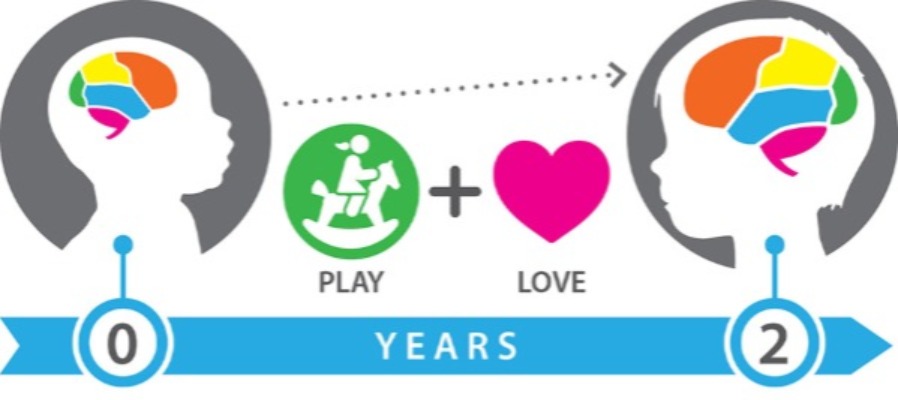Guiding Your Toddler's Path to Positive Discipline

As an Occupational Therapist and a mother of multiple children, I've gathered valuable insights into effective discipline strategies. Toddlers are at a developmental stage where they yearn for autonomy and mastery, which is entirely healthy. Although it can be demanding and sometimes overwhelming, it's vital that we, as caregivers, acknowledge and support this desire for independence. A child who isn't positively supported during this stage, either through constant negative labeling or a lack of positive boundaries, may experience feelings of shame, doubt, and insecurity. It's equally crucial for caregivers to maintain consistency, so parents, please welcome your nanny's input. Let's explore some principles:
Establishing 'Family Rules': At times, it might seem like every little thing turns into a battle. A good starting point is to set the foundation of "no harm to self, property, or others" as your guiding rule for discipline. Decide in advance how you'll respond and stick to it. Younger children may simply need redirection or distraction, while older toddlers should begin responding to verbal instructions.
Making Choices: It's acceptable for parents to take charge and limit a toddler's autonomy. When you need your child to do something, say, "Let's do..." instead of "Do you want to...?" It's essential for everyone to understand that we can't always have what we want. Sometimes, it's a "yes," sometimes a "no," and sometimes a "wait, not for now."
Offering Either/Or Choices: To encourage mastery in toddlers, provide them with either/or choices when selecting a play activity. For example, "Do you want to paint with the red paint or the green paint?" When you can accept the result of their choice, it's an ideal time to offer options.
Respect for Others' Property: Non-toy items are typically a "no." Items like keys, remotes, glasses, phones, or objects that a child cannot handle safely should not be given to them. "No" is an acceptable response, and nannies and other caregivers should feel comfortable saying, "That is my phone, thank you." Young ones learn to handle others' property with care when adults engage in play with them and demonstrate how. This also applies to another child's toys. It's perfectly fine to restrict access to another child's belongings if you know that a toddler hasn't yet developed the self-control to play gently. Your child should not be forced to share their cherished possessions with a visiting child who hasn't learned to handle them properly. Keep special items away, close bedroom doors, and provide less precious toys kept in a designated container. It's important to remember that while we can model taking turns, expecting young children to share without an emotional reaction isn't developmentally appropriate. Young children are prepared to take turns, which teaches them valuable lessons in patience and courtesy.
Using the ABC Approach
- A: Always acknowledge the intention behind the behavior. For instance, "I can see that you really want that toy, and it's hard to wait, but in our family, we take turns." Toddlers need to feel seen, and they rely on us to put their feelings into words. Ensure that you get down to their eye level.
- B: Set a boundary, such as "we take turns."
- C: Offer them a choice (one that you can live with). "You can either wait for two minutes to play or play with this car."
Using Positive Language for Misbehavior: When toddlers engage in actions like hitting or grabbing, use positive language to express what you want them to do rather than saying "no" or "stop it." Give them the words to express their actions, such as "touch the plant softly," "gently stroke their hair," or "give her the toy gently." Take their hand and guide them through the action, such as after pulling another child's hair, open their hand, hold it open with your hand, and help them stroke the child's hair while saying "soft touch." I've mentioned that learning to accept "no" when wanting things that aren't theirs is a valuable skill for a child to develop. However, try to avoid using "no" as the initial response when dealing with challenging behaviors, as it may lead them to respond in kind. "Uh oh" can be a useful alternative and help prevent toddlers from adopting "no" as a habitual response.
Being a Role Model: Often, in the rush of daily life, we unintentionally display negative behavior to our little ones. It's a wise idea to slow down and exemplify good behavior. Rather than grabbing something from their hands, ask them politely for it, allowing them to experience giving willingly. This approach reduces the likelihood of them snatching from others.
Sign Language for Early Communication: Starting from eight months old, teaching children sign language gestures for 'please,' 'thank you,' 'more,' and 'all done' (no more) can be very useful. Encourage them to use the signs appropriately, and they'll begin using them from around nine months. This can significantly reduce frustration and crying when they want something, as they can express themselves effectively.
In conclusion, imagine this exercise: picture yourself in a spacious house as the sun sets, and you're alone for the night. You lock all the doors, have dinner, and prepare for bed. Feeling a bit anxious, what do you do? You double-check all the doors. Just like that, our toddlers are constantly checking that the doors are locked with us, their parents. Setting boundaries and ensuring they are 'locked' provides them with a sense of security. Embrace your role as a parent and don't fear your child's reaction to boundaries; understand that you are ensuring they feel secure and protected. Few things are scarier for a toddler than feeling like they're running the household.


